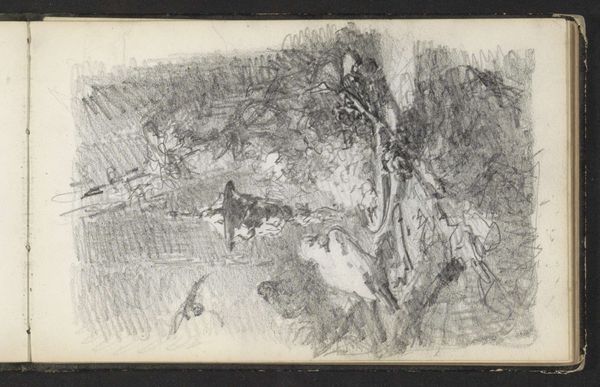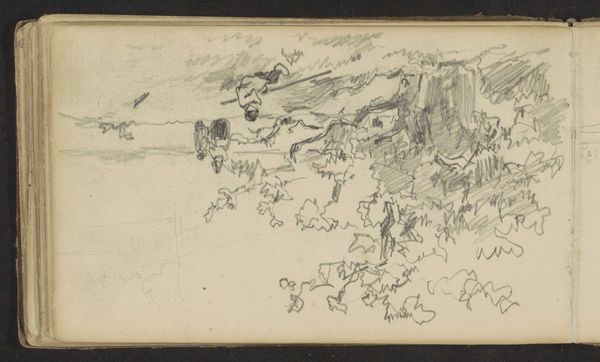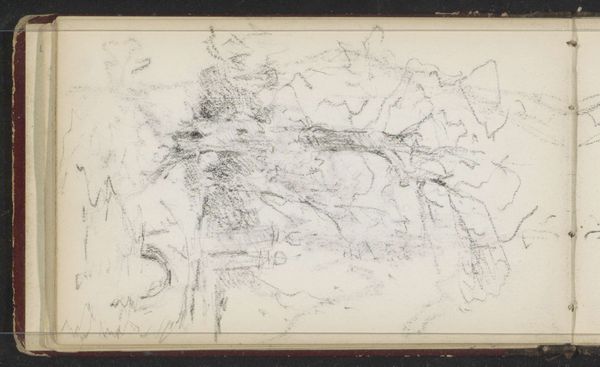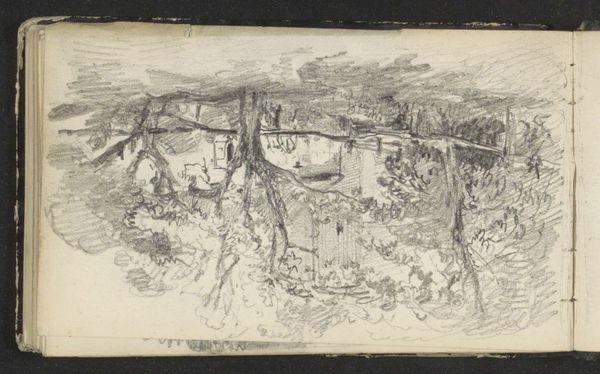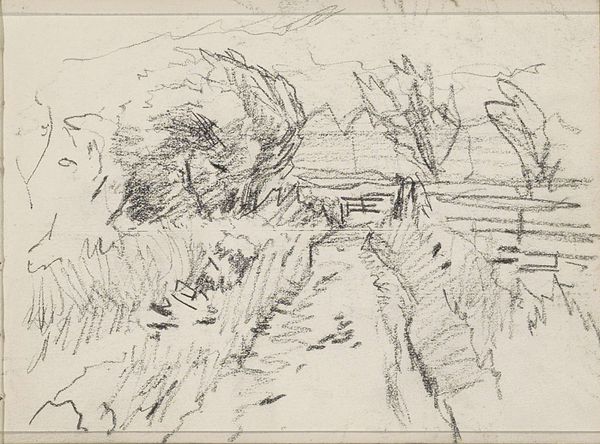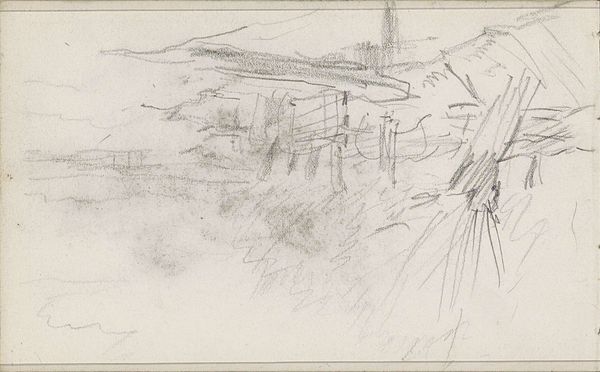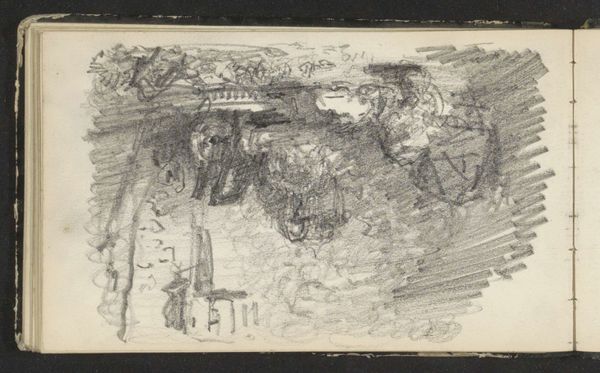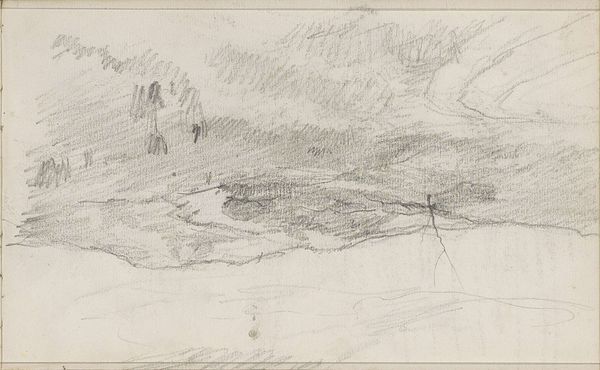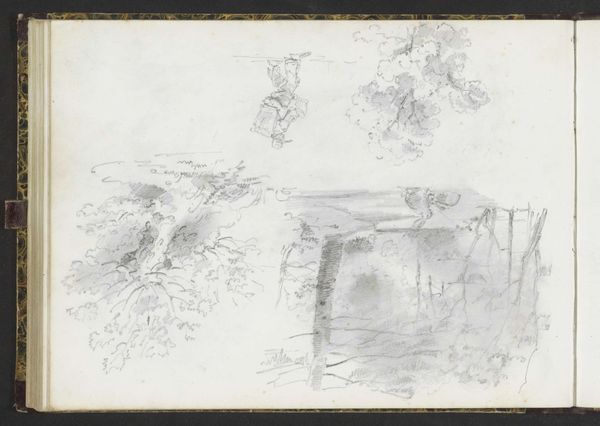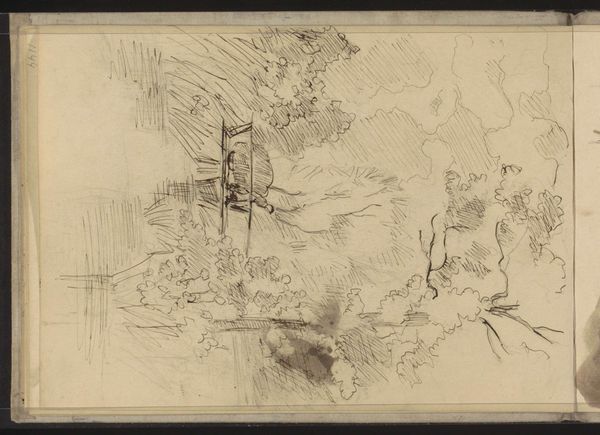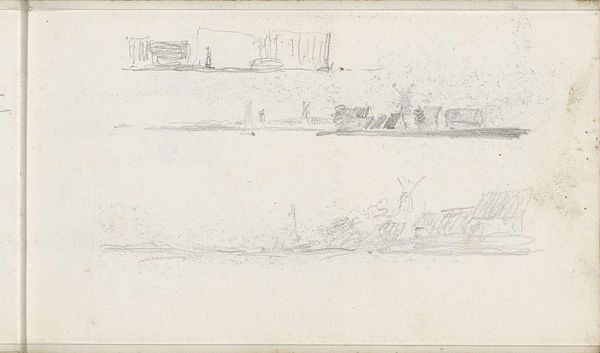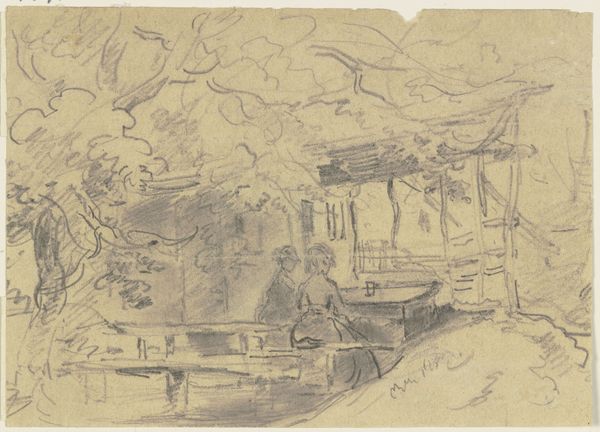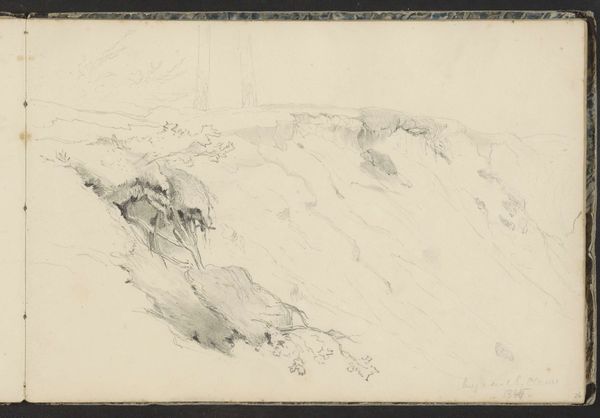
Dimensions: height 101 mm, width 157 mm
Copyright: Rijks Museum: Open Domain
Willem Cornelis Rip made this pencil drawing of a figure on a path in a landscape. Rip was part of the Hague School, a group of Dutch artists active in the second half of the 19th century. The Hague School artists reacted against the formalism of the art academy. Instead, they sought to represent the everyday lives of ordinary people. The art market also played a role, with artists like Rip selling directly to bourgeois collectors, rather than working on commission for the church or aristocracy. This allowed for new kinds of subject matter, like landscapes and genre scenes. Rip's landscapes reflect the influence of the Barbizon school in France, known for its naturalistic depictions of the countryside. To further understand this drawing, one might explore exhibition histories and collectors' records to know the artist and the drawing's public life. Understanding the institutions that shape the production and reception of art gives us a better understanding of its cultural work.
Comments
No comments
Be the first to comment and join the conversation on the ultimate creative platform.

